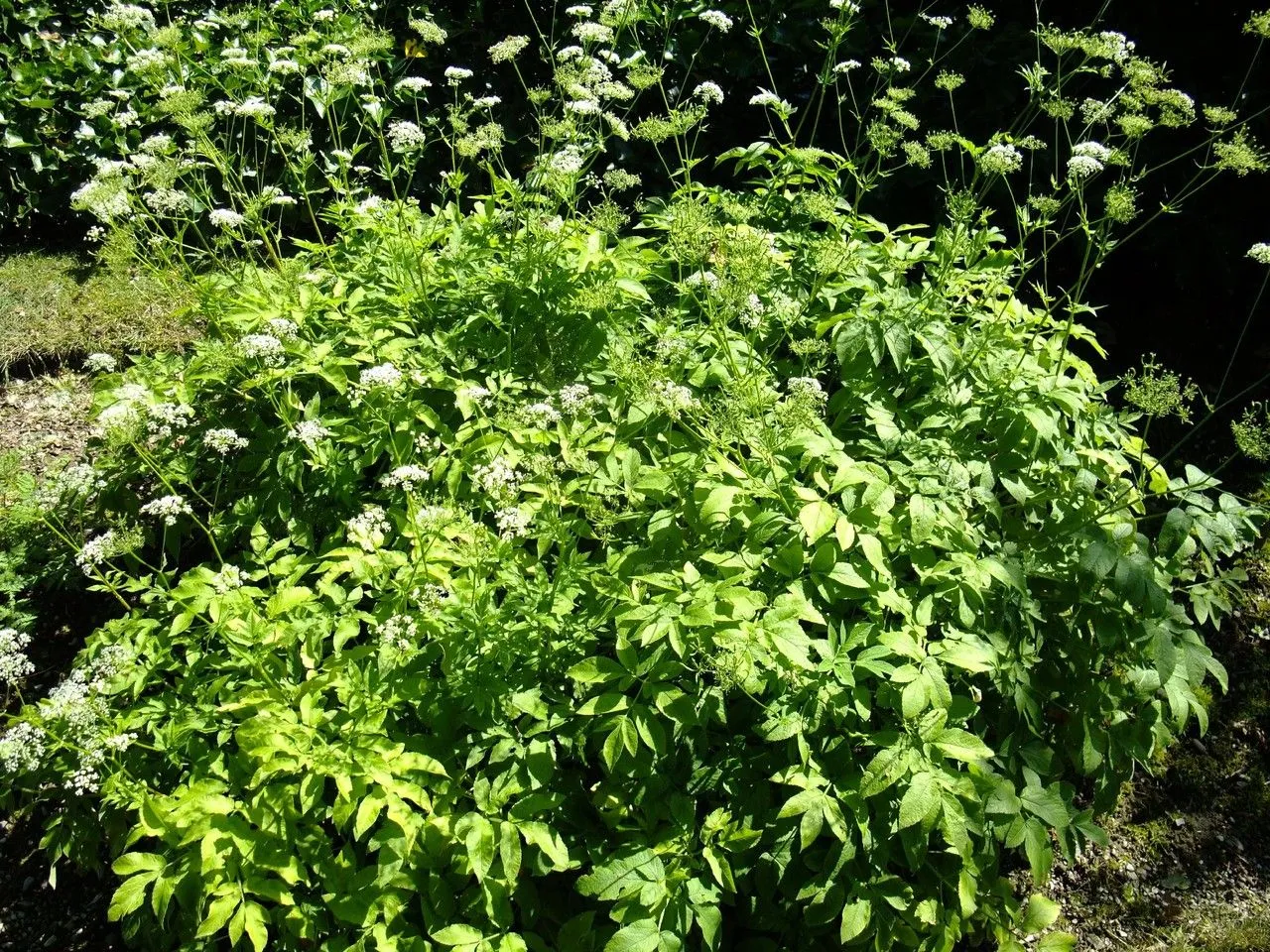
Author: L.
Bibliography: Sp. Pl.: 259 (1753)
Year: 1753
Status: accepted
Rank: species
Genus: Chaerophyllum
Vegetable: False
Observations: C., SE. & E. Europe
Broadleaf chervil, known scientifically as Chaerophyllum aromaticum, is an intriguing plant that belongs to the Apiaceae family. Described in 1753 by the renowned botanist Carl Linnaeus, broadleaf chervil has captivated botanists and plant enthusiasts alike with its distinctive characteristics and aromatic properties.
Native to Central, Southeastern, and Eastern Europe, Chaerophyllum aromaticum thrives in a variety of environments across this broad geographical range. Its adaptability and resilience make it a common sight in both wild and cultivated settings within these regions.
Characterized by its lush, broad leaves, broadleaf chervil is a herbaceous plant that can add both aesthetic and functional value to gardens. The leaves, known for their aromatic quality, often emit a pleasant scent that can enrich culinary dishes and provide a sensory delight for gardeners who rub them between their fingers.
In terms of appearance, broadleaf chervil typically has finely divided leaves that are reminiscent of fern fronds. This delicate foliage not only contributes to its ornamental appeal but also underlines its kinship with other members of the Apiaceae family, such as parsley, carrots, and fennel.
The plant’s flowers, although not the main attraction, add to its charm with their subtle beauty. Typically white and arranged in compound umbels, the flowers attract a variety of pollinators, contributing to the biodiversity and ecological health of the area.
Broadleaf chervil can be an engaging addition to herb gardens, where its aromatic leaves can be harvested for culinary uses. Whether sprinkled fresh in salads, used as a garnish, or incorporated into complex recipes, the leaves impart a mild, pleasant flavor that enhances a variety of dishes.
For those interested in ethnobotany or traditional medicine, broadleaf chervil may also hold some intrigue. Historically, similar species within the Chaerophyllum genus have been used for their potential medicinal properties, although any specific uses should be approached with caution and proper research.
In summary, Chaerophyllum aromaticum, or broadleaf chervil, is a versatile and aromatic plant native to Europe. Its broad leaves, pleasant scent, and adaptability make it a valuable addition to both natural landscapes and cultivated gardens. Whether appreciated for its sensory contributions or its potential culinary uses, broadleaf chervil continues to be a plant of interest for many.
Deu: aromatischer kälberkropf, gewürz-kälberkropf
Dan: duftende hulsvøb, hundesalat, hvid okseøje, nokketunge, stivhåret borst, vellugtende hulsvøb
Fin: juovamaitiainen, kesämaitiainen, päivänkakkara
Nor: lodnefølblom, prestekrage, stripefølblom
Swe: prästkrage, sommarfibbla, strimfibbla, doftkörvel, luktfloka
Eng: broadleaf chervil, broad-leaved chervil
En: Broadleaf chervil, Broad-leaved Chervil
Ar: سرفل عطري
Be: Цьмянец духмяны
Zh: 芳香細葉芹
Cs: Krabilice zápašná
Da: Duftende hulsvøb, Hundesalat, Hvid Okseøje, Nokketunge, Stivhåret Borst, Vellugtende hulsvøb
Et: Lõhnav varesputk
Fi: Tuoksukirveli, Juovamaitiainen, Kesämaitiainen, Päivänkakkara
De: Aromatischer Kälberkropf, Gewürz-Kälberkropf
It: Cerfoglio aromatico
Lt: Kvapusis gurgždis
No: Lodnefølblom, Prestekrage, Stripefølblom
Pl: Świerząbek korzenny
Ru: Бутень ароматный
Sv: Doftkörvel, Prästkrage, Sommarfibbla, Strimfibbla, Luktfloka
Uk: Бутень запашний
Taken Jul 31, 2021 by T.O.Bias (cc-by-sa)
Taken Jul 10, 2021 by T.O.Bias (cc-by-sa)
Taken Jul 10, 2022 by Katrin Sonnemann (cc-by-sa)
Taken Jul 25, 2014 by Tela Botanica − Yoan MARTIN (cc-by-sa)
Taken Jul 25, 2014 by Tela Botanica − Yoan MARTIN (cc-by-sa)
© copyright of the Board of Trustees of the Royal Botanic Gardens, Kew.
Taken May 13, 2022 by Ulrich Stephinger (cc-by-sa)
Taken Sep 5, 2019 by benoit bock (cc-by-sa)
Taken Jun 19, 2022 by Gabriela Svobodova (cc-by-sa)
Taken Jul 25, 2014 by Tela Botanica − Yoan MARTIN (cc-by-sa)
Taken Aug 9, 2022 by Alexander Baransky (cc-by-sa)
Taken Jul 10, 2022 by Katrin Sonnemann (cc-by-sa)
Taken Aug 10, 2021 by Janos Balint (cc-by-sa)
Taken Aug 9, 2022 by Alexander Baransky (cc-by-sa)
Taken Aug 10, 2021 by Janos Balint (cc-by-sa)
Taken Aug 15, 2012 by Photoflora – Benoit BOCK (©)
Taken Jul 28, 2020 by Ильина (cc-by-sa)
Taken Jul 31, 2021 by T.O.Bias (cc-by-sa)
Taken Jul 25, 2014 by Tela Botanica − Yoan MARTIN (cc-by-sa)
Family: Myrtaceae Author: (F.Muell.) K.D.Hill & L.A.S.Johnson Bibliography: Telopea 6: 402 (1995) Year: 1995 Status:…
Family: Rubiaceae Author: Pierre ex A.Froehner Bibliography: Notizbl. Bot. Gart. Berlin-Dahlem 1: 237 (1897) Year:…
Family: Sapindaceae Author: Koidz. Bibliography: J. Coll. Sci. Imp. Univ. Tokyo 32(1): 38 (1911) Year:…
Family: Asteraceae Author: A.Gray Bibliography: Pacif. Railr. Rep.: 107 (1857) Year: 1857 Status: accepted Rank:…
Family: Fabaceae Author: Medik. Bibliography: Vorles. Churpfälz. Phys.-Ökon. Ges. 2: 398 (1787) Year: 1787 Status:…
Family: Aspleniaceae Author: (Cav.) Alston Bibliography: Bull. Misc. Inform. Kew 1932: 309 (1932) Year: 1932…